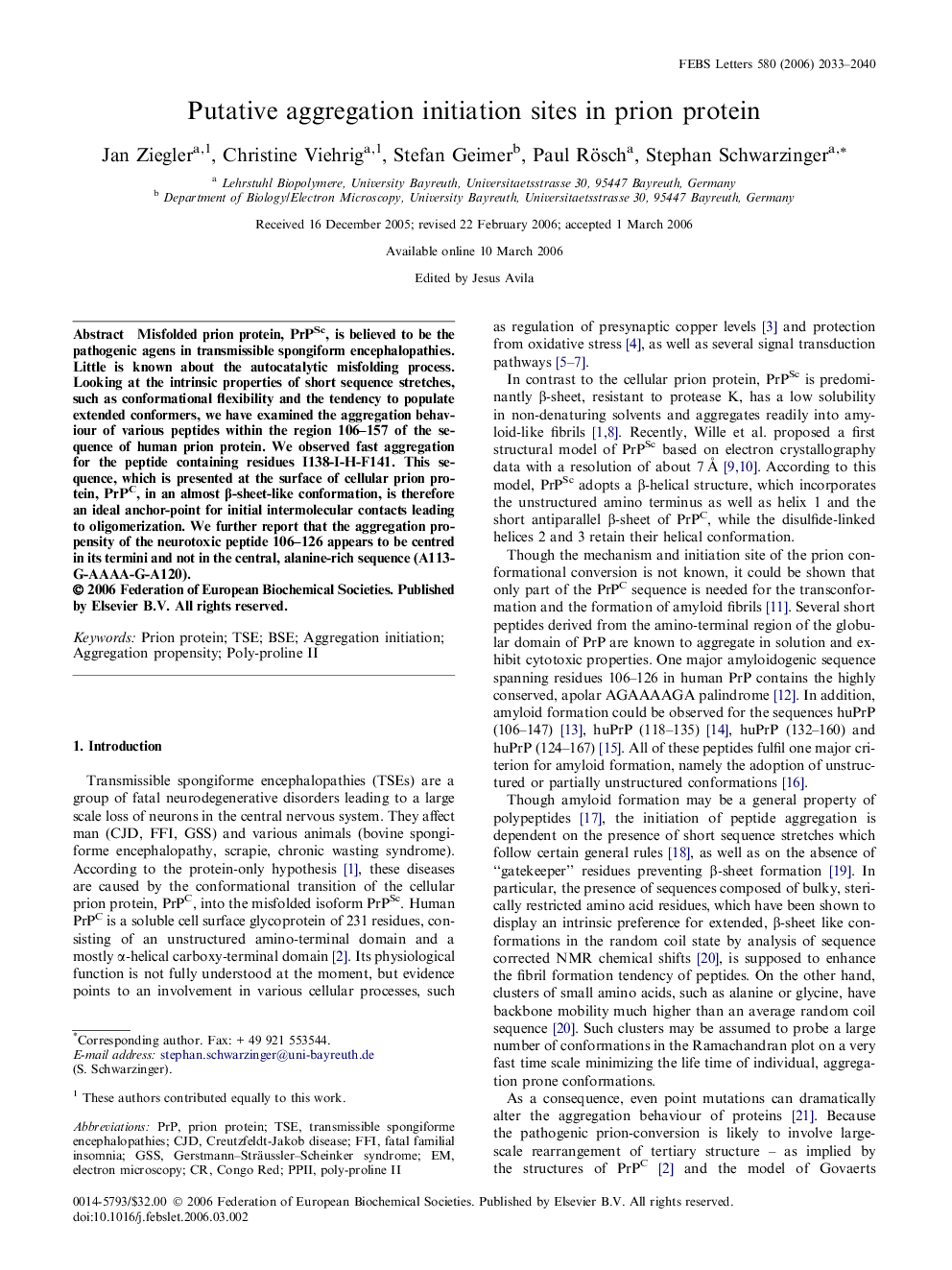| Article ID | Journal | Published Year | Pages | File Type |
|---|---|---|---|---|
| 2050824 | FEBS Letters | 2006 | 8 Pages |
Misfolded prion protein, PrPSc, is believed to be the pathogenic agens in transmissible spongiform encephalopathies. Little is known about the autocatalytic misfolding process. Looking at the intrinsic properties of short sequence stretches, such as conformational flexibility and the tendency to populate extended conformers, we have examined the aggregation behaviour of various peptides within the region 106–157 of the sequence of human prion protein. We observed fast aggregation for the peptide containing residues I138-I-H-F141. This sequence, which is presented at the surface of cellular prion protein, PrPC, in an almost β-sheet-like conformation, is therefore an ideal anchor-point for initial intermolecular contacts leading to oligomerization. We further report that the aggregation propensity of the neurotoxic peptide 106–126 appears to be centred in its termini and not in the central, alanine-rich sequence (A113-G-AAAA-G-A120).
